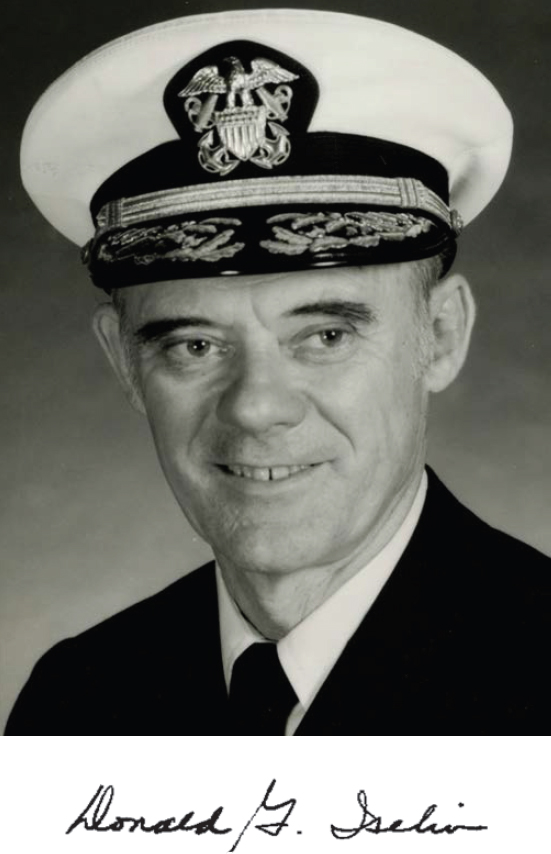DONALD G. ISELIN
1922–2012
Elected in 1980
“Innovative leadership in planning and meeting civil engineering challenges of great importance to the nation.”
BY THE NAVAL FACILITIES ENGINEERING COMMAND STAFF SUBMITTED BY THE NAE HOME SECRETARY
Rear Admiral DONALD GROTE ISELIN, 89, died March 9, 2012, in Santa Barbara, where he lived for 24 years.
Born September 5, 1922, in Racine, Wisconsin, to Harry and Rose Iselin, Admiral Iselin attended Marquette University for two years before enrolling in the United States Naval Academy, where he graduated at the top of his class in 1945 and promptly wed his high school sweetheart, Jacqueline Mary Myers, on June 9. Married 63 years before she passed away in July 2008, they had four children: Karen Maureen Iselin (deceased), Donna Iselin Broom, Michael Iselin, and Madeline Iselin Morici (deceased). He is also survived by eight grandchildren and six great-grandchildren.
Admiral Iselin served aboard the USS Providence at the end of World War II as part of the Mediterranean Occupation Forces before his selection to the Civil Engineer Corps. After earning bachelor’s and master’s degrees in civil engineering from Rensselaer Polytechnic Institute, he completed the Advanced Management Program at Harvard Business School and served the US Navy in positions of increasing responsibility until May 1977, when he assumed duties as Commander, Naval Facilities Engineering Command, and Chief of Civil Engineers.
As a leading engineer he oversaw major projects such as the design and construction of the nation’s first large-scale nuclear
power plant for producing electricity, and a water desalination plant in Guantanamo Bay when Fidel Castro terminated the Navy’s water supply. He was a technical advisor for Navy construction projects during the atom bomb tests at Eniwetok (now Enewetak). He earned a reputation as an innovator who, under hostile military conditions in Vietnam, implemented a new system of construction called “level of effort,” still in use by the Navy.
He was a registered engineer in the District of Columbia, past president of the Society of American Military Engineers (SAME), commissioner of the American Section, Permanent International Association of Navigation Congresses, and member of the board of directors for a number of organizations.
Among his numerous awards were USNA’s Gardner L. Caskey Memorial Prize, the SAME 1958 Moreell Medal, the Navy Commendation Medal, the Navy League’s Stephen Decatur Award, and four Legion of Merit awards. He also received the 1980 Engineering Alumni Professional Achievement Award from Marquette University. In addition to his election to the NAE, he was an honorary member of the American Institute of Architects.
Upon retiring from the US Navy in 1981, he joined Raymond Kaiser Engineering as a group vice president for construction, design, finance, and personnel. He retired 5 years later and spent the next 15 years working as an independent management and construction consultant. Well into his later years he remained professionally active, including serving as a senior member of a panel overseeing construction activity for major projects at three nuclear power laboratories.
To the world he was Admiral Iselin, but to family he was “Buddy,” always ready to help fix a balky air conditioner, repair potholes in the family driveway, or roar with laughter as he read Winnie the Pooh stories to grandchildren. He is best remembered seated at the head of the dinner table, transforming a mundane trip for pizza into a side-splitting epic adventure that ended with a valuable lesson for those paying close enough attention.





